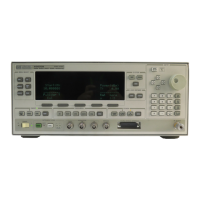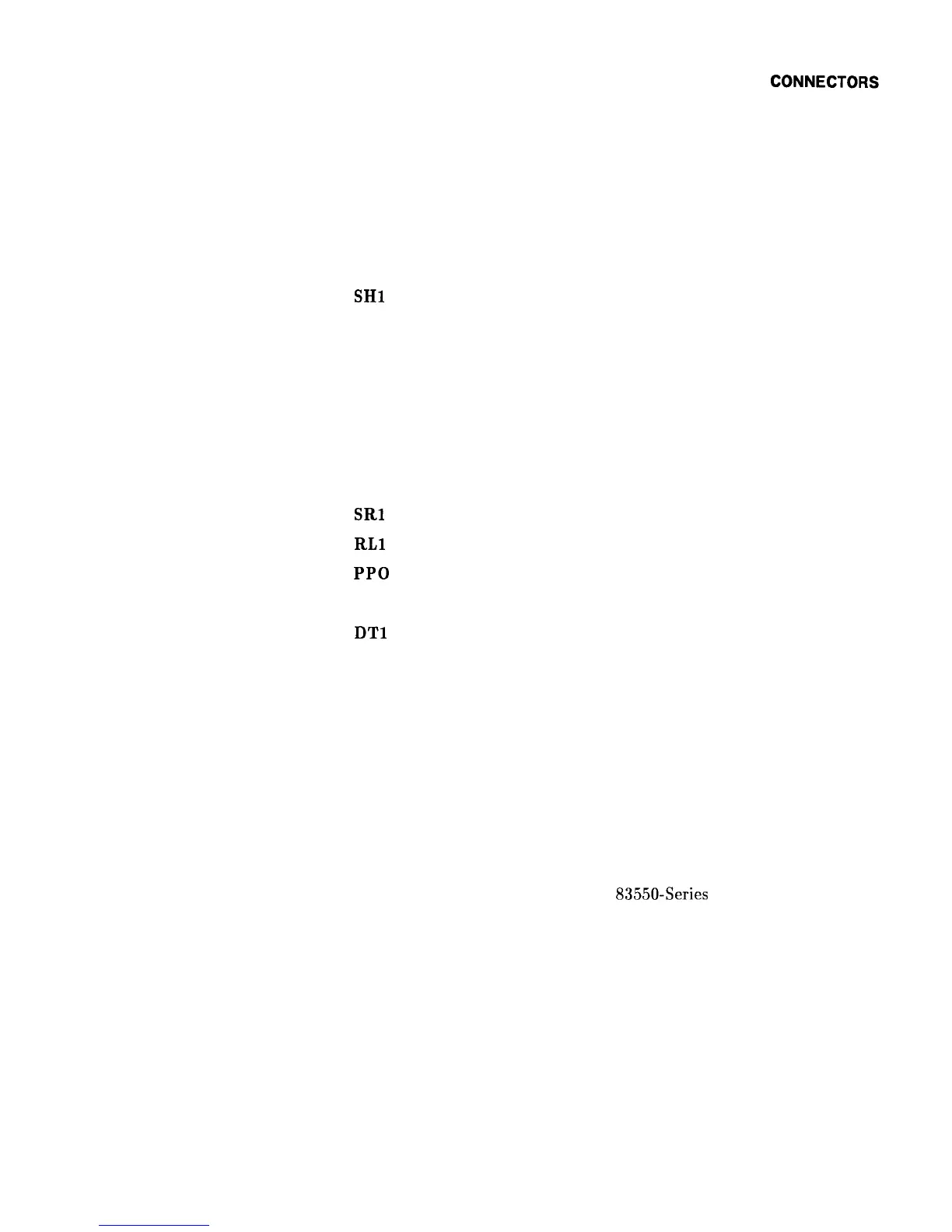operation up 1 km (3,280 ft),
and telephone modem operation over
any distance. HP Sales and Service offices can provide additional
information on the HP-IB extenders.
The codes next to the HP-IB connector, illustrated in Figure C-2,
describe the HP-IB electrical capabilities of the swept signal
generator, using IEEE Std. 488-1978 mnemonics (HP-IB, GP-IB,
IEEE-488, and IEC-625 are all electrically equivalent). Briefly, the
mnemonics translate as follows:
SHl
Source Handshake, complete capability.
AH1
T6:
TEO
L4
Acceptor Handshake, complete capability.
Talker; capable of basic talker, serial poll, and
unaddress if MLA.
Talker, Extended address; no capability.
Listener, capable of basic listener, and unaddress if
MTA.
LEO
Listener, Extended address; no capability.
SRI
Service Request, complete capability.
RLl
Remote Local, complete capability.
PPO
Parallel Poll, no capability.
DC1
Device Clear, complete capability.
DTl
Device Trigger, complete capability.
CO, 1, 2, 3, 28 Controller capability options; CO, no capabilities;
Cl, system controller; C2, send IFC and take charge;
C3, send REN; C28, send I. F. messages.
El
Electrical specification indicating open collector
outputs.
These codes are described completely in the IEEE Std 488-1978
document, published by The Institute of Electrical and Electronic
Engineers, Inc.,
345 East 47th Street, New York, New York 11017.
SOURCE MODULE INTERFACE sends and receives digital and
analog signals to and from an HP 83550-Series millimeter-wave
source module. With the source module connected, the swept signal
generator assumes the characteristics of the source module. Refer to
Leveling Point Module for more information.
Operating and Programming Reference C-9

